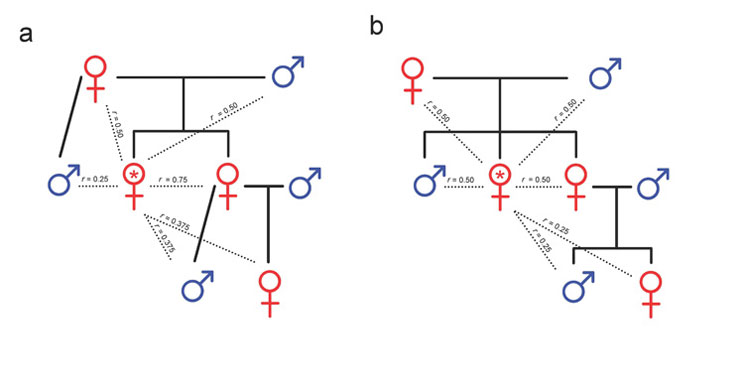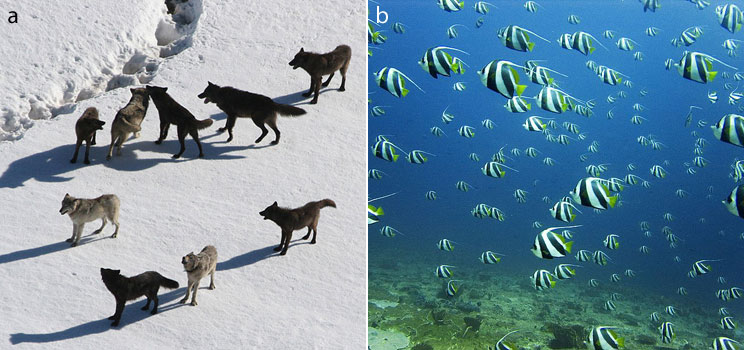This is a good overview of altruism, and social behavior as an adaptation that improves fitness.
 |
| Figure 3: Patterns of relatedness in a) diploid and b) haplodiploid species. (Rubenstein & Kealey, 2010) |
Eusociality
A comprehensive review eusociality is discussed in Cooperation, Conflict, and the Evolution of Complex Animal Societies by Rubenstein & Kealey (2010).
Some of the vocabulary words in the above articles are enabled with a click-and-define feature that should help with reading comprehension.
A comprehensive review eusociality is discussed in Cooperation, Conflict, and the Evolution of Complex Animal Societies by Rubenstein & Kealey (2010).
Some of the vocabulary words in the above articles are enabled with a click-and-define feature that should help with reading comprehension.
 |
| Figure 4: Solitary and primitively eusocial wasps. (Nowak et al., 2010). |
An article written by Nowak et al. (2010) entitled The Evolution of Eusociality explains the role that haploidy and diploidy are hypothesized to play in the inclusive fitness theory. (Access article through Rutgers)


No comments:
Post a Comment
Please contact me at Shappell.Ecology -at- gmail.com if you have any questions, comments, or concerns regarding the content of this blog.